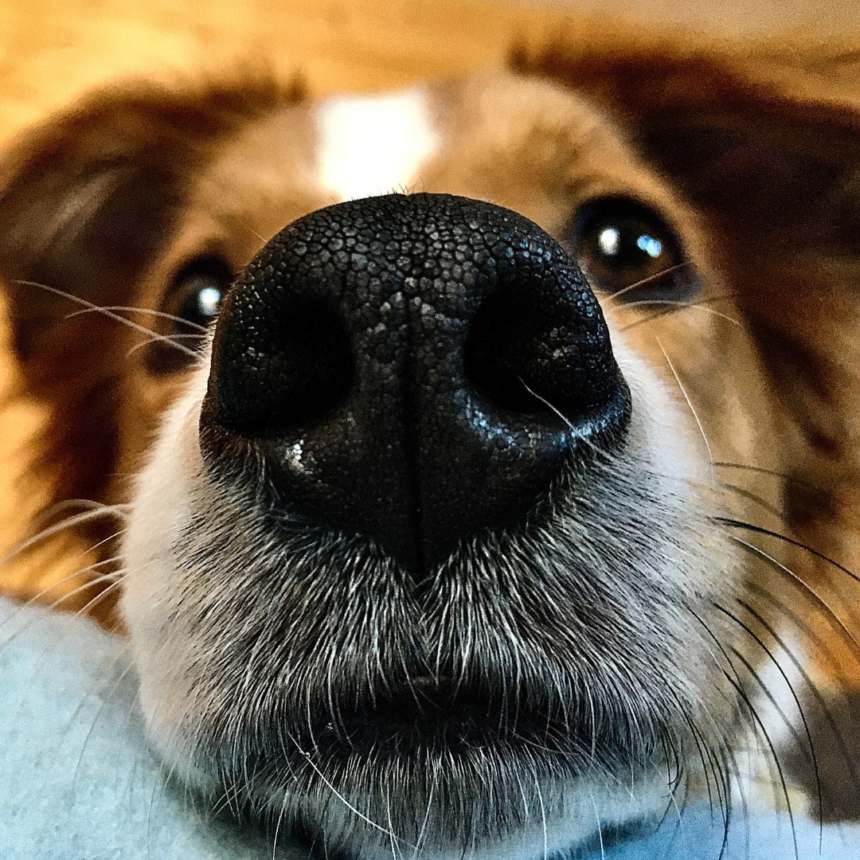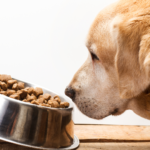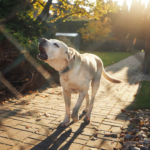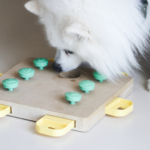Introduction
Dive into the extraordinary world of canine olfaction, where a dog’s nose isn’t just a tool for sniffing but a gateway to a realm of sensory wonders. This guide aims to unravel the mysteries behind canine olfaction, emphasizing its significance in a dog’s life and exploring practical insights that enhance our understanding of this incredible sense.
The Canine Olfactory System
A dog’s sense of smell is nothing short of miraculous, a testament to the intricate design of their olfactory system. To comprehend the marvel of canine olfaction, we embark on a journey into the anatomy and physiology that make their noses extraordinary.
At the heart of this olfactory marvel lies the nasal cavity, a labyrinth of specialized structures crafted to capture and process scents with unparalleled precision. The olfactory epithelium, a thin layer of tissue lining the nasal passages, houses millions of scent receptors, known as olfactory receptor neurons. These receptors are equipped with microscopic hair-like structures called cilia, which trap odor molecules and initiate the transmission of signals to the brain.
The olfactory bulb, a structure at the base of the brain, plays a pivotal role in processing these olfactory signals. Unlike humans, where the olfactory bulb is relatively small, in dogs, it’s large and sophisticated. This amplifies their ability to discriminate between an extensive range of scents, far beyond our human capabilities.
As scent molecules bind to receptors, an intricate dance of biochemical signals ensues, transmitting information to the olfactory bulb and eventually reaching the brain’s olfactory cortex. Here, the complex orchestration of scent interpretation takes place, allowing dogs to not only identify specific odors but also discern intricate details embedded within them.
The sheer number of scent receptors, estimated to be around 300 million in dogs compared to a mere 5 million in humans, showcases the magnitude of their olfactory prowess. This incredible design not only allows dogs to navigate and interpret their environment but also serves as the foundation for various scent-related activities, such as search and rescue missions or detection work.
The Power of a Dog’s Nose
A dog’s nose is a sensory marvel, a sophisticated apparatus capable of feats that often elude human comprehension. As we delve into the extraordinary capabilities of their olfaction, we’re met with a tapestry of wonders that surpass common misconceptions.
One of the most awe-inspiring aspects is a dog’s ability to detect scents over vast distances. Picture this: while we may struggle to discern the remnants of a meal in the kitchen, a dog can catch a whiff of a scent miles away. This is made possible by their acute sense of smell, governed by an intricate combination of anatomical structures and neural pathways designed for long-range olfactory reception.
Moreover, dogs showcase an unparalleled skill in identifying individual odors. In a sea of scents, they can isolate and differentiate specific odors with astonishing precision. This unique capability underlies various applications, from search and rescue missions to detecting specific substances like drugs or explosives.
Beyond their role as remarkable scent detectives, dogs exhibit an uncanny ability to sense changes in human health. Numerous anecdotes recount instances where dogs alerted their owners to impending health issues, such as seizures or low blood sugar levels. While the exact mechanisms remain a subject of ongoing research, it underscores the symbiotic bond between humans and their canine companions.
Dispelling common misconceptions, it’s crucial to understand that a dog’s sense of smell is not just a heightened version of our own; it’s an entirely different realm of sensory perception. While humans rely primarily on sight, dogs navigate and interpret their world predominantly through scent.
Challenges and Solutions
In a world where smells swirl like an invisible tapestry, dogs navigate environments brimming with scents, facing unique challenges and opportunities that shape their experiences. Understanding these challenges is pivotal for pet owners aiming to enrich their furry friend’s olfactory encounters.
One prevalent challenge is the abundance of distractions that scent-rich environments pose. From enticing food aromas to the allure of other animals’ scents, dogs may find it challenging to focus amid the olfactory symphony. This can impact training sessions or compromise safety during walks. Pet owners can address this by incorporating focused training exercises, gradually increasing complexity to enhance their dog’s ability to concentrate amidst enticing aromas.
Sensory overload is another hurdle dogs encounter in scent-saturated surroundings. Imagine a bustling park or a crowded street, each offering a cacophony of odors that can overwhelm a dog’s finely tuned sense of smell. To mitigate this, pet owners can opt for quieter, less congested areas for walks, providing their dogs with a more manageable olfactory experience.
Additionally, potential health risks lurk within these scent-laden environments. Dogs might encounter toxic substances or allergens, unknowingly putting their well-being at risk. Responsible pet ownership involves awareness of surroundings, steering clear of harmful substances, and promptly seeking veterinary attention if concerns arise.
Practical solutions abound for pet owners seeking to optimize their dog’s olfactory experiences. Enrichment activities, such as scent games and puzzle toys, engage a dog’s sense of smell in a controlled and enjoyable manner. Mindful exposure, gradually introducing dogs to new scents, helps build their tolerance and prevents sensory overload.
Enhancing Canine Well-being
In the intricate tapestry of a dog’s sensory world, the sense of smell emerges as a guiding force, not just for exploration but also for overall well-being. Understanding the profound connection between a dog’s olfactory sense and their mental health unveils opportunities for enriching their lives and promoting a harmonious bond with their human companions.
Scent-driven activities, such as nose work and interactive toys, play a pivotal role in providing mental stimulation for dogs. Engaging a dog’s sense of smell in structured tasks not only satisfies their innate curiosity but also challenges their cognitive abilities. This mental exercise is akin to a workout for their brains, contributing significantly to their overall well-being.
Nose work, in particular, taps into a dog’s natural instincts by encouraging them to use their sense of smell to locate hidden scents or treats. This type of activity not only provides a satisfying mental challenge but also promotes a sense of accomplishment, boosting a dog’s confidence and reducing stress. As dogs follow scent trails or solve olfactory puzzles, they enter a focused state that allows them to unwind from daily stressors.
Interactive toys designed to dispense treats or release scents upon manipulation offer a two-fold benefit. They provide physical activity, promoting a healthy lifestyle, while the mental effort required to extract rewards stimulates a dog’s problem-solving skills. These toys become a source of entertainment, preventing boredom and associated behavioral issues.
For pet owners, incorporating scent-driven activities into their dog’s routine becomes a means of fostering a healthier, happier companion. It aligns with a holistic approach to canine well-being, recognizing the importance of mental and emotional fulfillment. By embracing these olfactory enrichment strategies, pet owners can create an environment that nurtures their dog’s natural instincts, resulting in a more content and balanced canine friend.
Conclusion
From the intricate anatomy of their olfactory system to the remarkable capabilities that set their noses apart, we’ve explored the wonders of this sensory superpower. Understanding the power of a dog’s nose isn’t merely a glimpse into their biology; it’s an appreciation of the profound impact this sense has on their well-being. By acknowledging the challenges they face in scent-saturated environments, we pave the way for solutions that enhance their sensory experiences.
As responsible pet owners, we hold the key to optimizing our dog’s olfactory life. Enrichment activities, mindful exposure, and recognizing the importance of scent-driven well-being contribute not only to their mental stimulation but also to a harmonious and joyful companionship.
In the end, the nose truly knows, and by embracing and enhancing our dogs’ olfactory experiences, we open doors to a richer, more fulfilling life for them. Let their noses lead the way, and embark on a sensory journey that strengthens the extraordinary connection between you and your canine companion.









